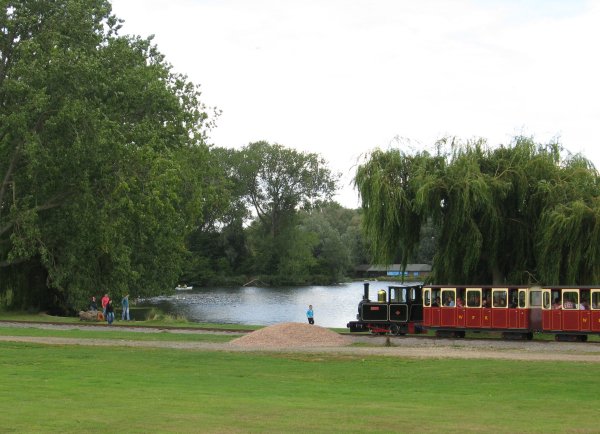|
|
|
From the land of mountains we head eastwards, across the March to the East Midlands. Here we find rolling hills, relative economic prosperity, lots of 1960s housing developments and the delights of the Ise valley. The Ise is a small river which rises in the fields around the villages of Clipston and Arthingworth, Northamptonshire (towards the northern border of the county). It flows neatly between Desborough and Rothwell and then wends across the greenbelt between the larger towns of Kettering and Corby. Turning south around the north-eastern flank of Kettering, it heads into the town and finds itself in a large expanse of open land called Wicksteed Park. Kettering is a bellweather town - a highly marginal Parliamentary seat which has traditionally broadly represented the attitudes of the country as a whole. Currently these attitudes, as represented by the sitting Conservative MP, are extreme Eurosceptism, hopes that something nice will happen in Palestine, a lack of fondness for expenses, disapproval of the current Government and a distrust of burkhas. He has a majority of around 9,000. Wicksteed Park was created by an inventive Liberal called Charles Wicksteed. Having spent the 19th century developing ploughs and steel cutting equipment which made him immensely rich, he decided it was time that someone spent some money in Kettering. The result was an amusement park which consisted, in a rather traditional manner, primarily of a very large lake surrounded by lawns. Towards the East end were a collection of rides, many of which were designed by the great man himself and which are still in operation in some form or another. A striking Pavilion allows the Park to host events of various shapes and sizes and the area is generally a substantial asset to the town. Few other places of such size have anything so convenient - hence the relative economic prosperity. In 1930 Mr Wicksteed - oddly never knighted, elevated to the Lords or conspicously granted a substantial tax-free bonus - decided to add a railway to proceedings, ambling around the lake and offering views of the adjacent Midland Railway as the larger concern passed through Kettering on the way to London St Pancras. He died in 1931 before the Wicksteed Railway and its two Steam Outline Diesels - Lady of the Lake and King Arthur - were completed, but it represents the most notable element of his enduring local legacy (in stiff competition with the Watershoot ride and the lake itself). The two SODs were withdrawn from regular use in 2004, having been replaced with new SODs from other sources. Currently services are operated by the appropriately-named Merlin and a rake of enclosed coaches. These were all built by one of the UK's last train builders - Alan Keef of Lea, near Ross-on-Wye in Herefordshire. The line is now claimed to be the "busiest commercial narrow-gauge railway in the country" - readers are invited to send in examples of other narrow-gauge commercial railways in Britain. From time to time a real steam locomotive rolls up to operate trains in the attractive, if not dramatically scenic, Ise valley. From Wicksteed, the Ise flows southwards past Burton Latimer and its cereal factory to Wellingborough, where it feeds into the larger River Nene. |
